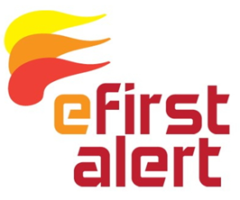Here’s an example dispatch. You see the call type , the address, and the list of units.
HIGH-RISE STRUCTURE FIRE
Dispatch address 1701 N FLAGLER DR @VISTA DEL LAGO (FLAGLER DR)

Let’s look at the units – what do those letters and numbers means?
Let’s start off with the basics. There are many different types of emergency response units that the general public calls “a fire truck”, but very few of what you see are actually “fire trucks” according to the fire service.
When you see each dispatch, the “units” listed are composed of letter abbreviations for the type of unit and numbers to indicate what station they’re from. E23 would an Engine from station 23. L15 is the ladder truck from station 15.
Here’s a breakdown of the common unit types:
- Fire Engine – a truck that pumps water and has hoses to fight fires. (E)
- Rescue – used to transport a sick or injured person. Outside of the fire service it would be called an ambulance. (R)
- Ladder Truck – a ladder may or may not have a pump, but it has a long ladder mounted to the truck to reach tall buildings. It also carries many ground ladders. (L)
- Fire Truck – Similar to a ladder truck, but rather than a “ladder” mounted to the chassis, it has an aerial device that has a bucket on the end where firefighters can stand (TR)
- Brush Truck – specialized equipment designed for off-road use to fight brush and grass fires (B)
- Tender – carries a large amount of water to help fight the fire in areas where there are no fire hydrants (T)
- TraumaHawk – The Healthcare District maintains two air ambulances, called Traumahawks. They have slightly different designations, because they have two levels of dispatch. If a call looks like it MAY need a helicopter, the Traumahawk is put on “standby”. The dispatch code is either THA or THB depending on which chopper it is. This means the pilot and crew prepare the aircraft, and get ready to launch. When it’s determined the chopper is needed on scene, it’s re-dispatched as either TH1 or TH2, and that indicates the chopper has been told fly.
- HazMat – The hazardous material response team. The city of West Palm Beach HazMat is (HM2), while the County HazMat teams are termed “Special Ops” and have have an (SO) designation.
- Radio Channel – large incidents are assigned a specific radio channel to allow safer communications, called TAC channels. You’ll see this in the dispatch as a (TAC) code. It’s not a physical unit that responds – it just allows the system to know what radio channels are already in use.
There are a number of other units generally referred to as “Command units.” These are officers in the Fire system that are dispatched to oversee larger or complicated scenes. In the case of EMS Captains, they carry specialized drugs that are not kept on the rescue.
In order of rank, they are:
- EMS Captain (EMS)
- Battalion Chief (BC)
- District Chief (DC)
The heart of every dispatch is what units are sent on the call. You may not be aware, but one of the reasons 911 operators ask you so many questions is because it controls what units are sent to the call.
Different types of medical calls get different responses. If the call is someone who has fallen and is not injured, generally just an engine company is sent. If someone has fallen and IS injured, a rescue would get sent. Traffic accidents have different responses as well. If it’s a simple crash then generally an engine and a rescue are sent. If it involves a pedestrian or a motorcycle, then an EMS Captain is also sent. If there’s a rollover or someone trapped, then additional units are dispatched. If the crash is on the freeway, then at least one additional unit is sent to be a “blocking” engine — it’s sole purpose is to provide a physical barrier between the moving traffic and the emergency responders.

